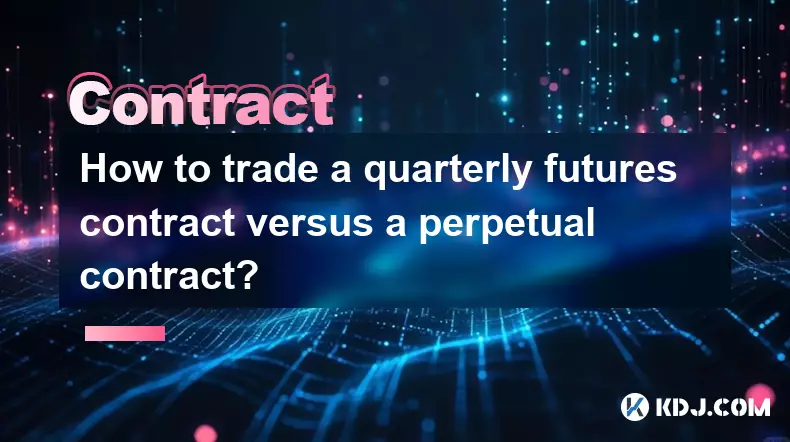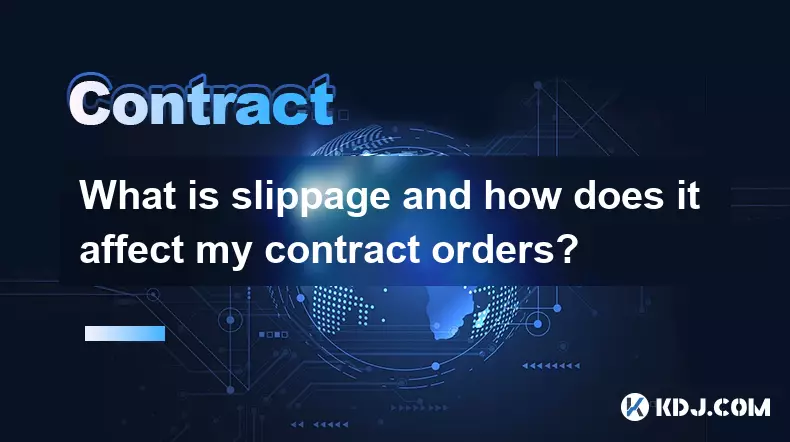-
 bitcoin
bitcoin $100977.009184 USD
-2.05% -
 ethereum
ethereum $3282.009150 USD
-3.23% -
 tether
tether $0.999813 USD
-0.02% -
 xrp
xrp $2.208254 USD
-4.89% -
 bnb
bnb $951.411089 USD
0.55% -
 solana
solana $155.761205 USD
-2.84% -
 usd-coin
usd-coin $1.000217 USD
0.02% -
 tron
tron $0.284475 USD
-1.28% -
 dogecoin
dogecoin $0.162363 USD
-1.53% -
 cardano
cardano $0.533988 USD
-0.47% -
 hyperliquid
hyperliquid $39.174339 USD
-3.22% -
 chainlink
chainlink $14.724828 USD
-1.16% -
 bitcoin-cash
bitcoin-cash $477.297986 USD
-1.28% -
 zcash
zcash $554.227426 USD
17.30% -
 ethena-usde
ethena-usde $0.998995 USD
-0.03%
Using Fibonacci Retracement in Your Crypto Contract Trading.
Fibonacci retracement helps crypto traders identify high-probability reversal zones, especially when combined with volume and trend analysis.
Nov 05, 2025 at 03:20 am

Fibonacci Retracement: A Strategic Tool for Crypto Traders
1. Fibonacci retracement levels are derived from the mathematical relationships within the Fibonacci sequence. These levels—commonly 23.6%, 38.2%, 50%, 61.8%, and 78.6%—are used by traders to identify potential reversal points in price movements. In the volatile world of cryptocurrency contract trading, these levels serve as critical reference points where buyers or sellers may re-enter the market.
2. When applied correctly, Fibonacci retracement helps traders anticipate where a crypto asset might pause or reverse after a significant move. For example, during a strong upward trend in Bitcoin futures, a pullback to the 61.8% level often signals a high-probability area for long positions. This level is psychologically significant and frequently respected by institutional and retail traders alike.
3. The tool works best when combined with other technical indicators such as volume, moving averages, or RSI. Using Fibonacci lines alone can lead to false signals, especially in markets driven by news or macroeconomic factors. However, when confluence occurs between a retracement level and a support/resistance zone confirmed by volume spikes, the trade setup becomes more reliable.
4. Contract traders benefit from using Fibonacci retracements on higher timeframes like the 4-hour or daily charts. Short-term noise diminishes on these frames, allowing clearer identification of key levels. Scalpers may use the 15-minute or hourly charts but should validate levels across multiple timeframes to avoid whipsaws.
5. It's essential to draw the retracement correctly—from swing low to swing high in an uptrend, and vice versa in a downtrend. Misalignment leads to inaccurate projections. Many traders fail because they anchor the tool incorrectly, resulting in poor entry and exit decisions.
How to Apply Fibonacci Levels in Real-Time Trading
1. Begin by identifying a clear price swing on your chart. Look for a substantial rally or drop in a major cryptocurrency like Ethereum or Solana. Once confirmed, apply the Fibonacci tool from the start of the move to its peak or trough.
2. Monitor how price reacts as it approaches each level. A bounce off the 38.2% or 61.8% mark with strong candlestick patterns (like bullish engulfing or hammer formations) increases the probability of continuation in the original trend.
3. Use the levels to define stop-loss and take-profit zones. Placing a stop just below the 78.6% retracement in an uptrend protects against deep corrections. Take-profit targets can be set at previous resistance areas or extended Fibonacci projections beyond 100%.
4. Watch for price rejection signs such as long wicks, shrinking volume on pullbacks, or divergence on momentum oscillators. These signals strengthen the validity of a Fibonacci-based trade decision.
5. Adjust your position size based on proximity to key levels. Entering near 61.8% with confirmation allows for larger exposure compared to speculative entries at minor levels like 23.6%, where reversals are less certain.
Common Pitfalls and How to Avoid Them
1. One frequent mistake is applying Fibonacci retracements to insignificant price moves. Only use the tool on major swings that reflect genuine market sentiment shifts. Small fluctuations lack the structural integrity needed for reliable analysis.
2. Overlapping retracement levels from multiple swings can create confusion. Focus on the most recent and impactful move. If older levels align closely with current ones, that confluence enhances their importance.
3. Ignoring market context reduces effectiveness. During major news events or exchange outages, price may ignore Fibonacci zones entirely. Always assess the broader environment before relying solely on technical tools.
4. Some traders treat Fibonacci levels as exact reversal points. In reality, they represent zones of interest rather than precise triggers. Allow for slight breaches and evaluate price behavior around the area instead of expecting pinpoint accuracy.
5. Failure to update retracement lines after new highs or lows invalidates prior setups. Markets evolve rapidly in crypto; continuous reassessment ensures your strategy remains aligned with current dynamics.
Correctly applied Fibonacci retracement enhances precision in crypto contract entries and exits by highlighting high-probability reversal zones supported by market psychology and historical behavior.
Frequently Asked Questions
What is the most reliable Fibonacci level in crypto trading?The 61.8% level is widely regarded as the most significant due to its golden ratio foundation. Price reactions at this zone often indicate strong buyer or seller presence, especially when aligned with prior support or resistance.
Can Fibonacci retracement be used in sideways markets?Its effectiveness diminishes in ranging conditions where no clear trend exists. In such cases, horizontal support and resistance levels offer better guidance. Fibonacci works best in trending environments with defined impulsive moves.
How do I combine Fibonacci with leverage in contracts?Use retracement levels to determine optimal entry points, then adjust leverage based on distance to stop-loss. Closer stops allow higher leverage while maintaining risk control. Never increase leverage simply because a level appears favorable without proper risk assessment.
Do all cryptocurrencies respond equally to Fibonacci levels?Larger-cap assets like Bitcoin and Ethereum tend to respect technical levels more consistently due to higher liquidity and participation. Lower-cap altcoins may exhibit erratic behavior, making Fibonacci applications less dependable without additional confirmation signals.
Disclaimer:info@kdj.com
The information provided is not trading advice. kdj.com does not assume any responsibility for any investments made based on the information provided in this article. Cryptocurrencies are highly volatile and it is highly recommended that you invest with caution after thorough research!
If you believe that the content used on this website infringes your copyright, please contact us immediately (info@kdj.com) and we will delete it promptly.
- Vande Mataram at 150: Stamps, Coins, and a Year-Long Celebration
- 2025-11-07 14:45:01
- Pi Network: Alignment, Not Just Speed, Is the Future of Crypto
- 2025-11-07 13:00:02
- Pi Network: Life Changes and a New Era Dawns for Crypto Pioneers
- 2025-11-07 13:00:02
- Bonhams Hong Kong: Rare Watches Echo Through Time
- 2025-11-07 12:35:01
- Unverified Apps, PiCoin, and a Costly Lesson: Navigating the Wild West of Crypto
- 2025-11-07 13:05:01
- Fed Governors, FOMC, and Interest Rates: Navigating the Shifting Landscape
- 2025-11-07 13:05:01
Related knowledge

How to trade a quarterly futures contract versus a perpetual contract?
Nov 06,2025 at 06:44am
Understanding the Core Differences Between Quarterly and Perpetual Contracts1. Quarterly futures contracts have a fixed expiration date, typically set...

How to understand the liquidation engine for a crypto contract?
Nov 06,2025 at 09:05am
Understanding the Role of Liquidity Pools in Decentralized Finance1. Liquidity pools are foundational components within decentralized exchanges (DEXs)...

How to use a demo account to practice trading contracts?
Nov 06,2025 at 08:55am
Understanding the Purpose of a Demo Account in Contract Trading1. A demo account allows traders to simulate real market conditions without risking act...

What is slippage and how does it affect my contract orders?
Nov 06,2025 at 05:14am
Understanding Slippage in Cryptocurrency Trading1. Slippage refers to the difference between the expected price of a trade and the actual price at whi...

How to report crypto contract gains on my taxes?
Nov 06,2025 at 06:20pm
Tax Classification of Cryptocurrency Gains1. Cryptocurrency contract gains are typically treated as capital gains in most jurisdictions, including the...

What are the trading hours for CME Bitcoin contracts?
Nov 06,2025 at 02:59pm
Understanding CME Bitcoin Futures Trading Schedule1. The CME Group offers Bitcoin futures contracts that trade nearly around the clock, aligning close...

How to trade a quarterly futures contract versus a perpetual contract?
Nov 06,2025 at 06:44am
Understanding the Core Differences Between Quarterly and Perpetual Contracts1. Quarterly futures contracts have a fixed expiration date, typically set...

How to understand the liquidation engine for a crypto contract?
Nov 06,2025 at 09:05am
Understanding the Role of Liquidity Pools in Decentralized Finance1. Liquidity pools are foundational components within decentralized exchanges (DEXs)...

How to use a demo account to practice trading contracts?
Nov 06,2025 at 08:55am
Understanding the Purpose of a Demo Account in Contract Trading1. A demo account allows traders to simulate real market conditions without risking act...

What is slippage and how does it affect my contract orders?
Nov 06,2025 at 05:14am
Understanding Slippage in Cryptocurrency Trading1. Slippage refers to the difference between the expected price of a trade and the actual price at whi...

How to report crypto contract gains on my taxes?
Nov 06,2025 at 06:20pm
Tax Classification of Cryptocurrency Gains1. Cryptocurrency contract gains are typically treated as capital gains in most jurisdictions, including the...

What are the trading hours for CME Bitcoin contracts?
Nov 06,2025 at 02:59pm
Understanding CME Bitcoin Futures Trading Schedule1. The CME Group offers Bitcoin futures contracts that trade nearly around the clock, aligning close...
See all articles










































































